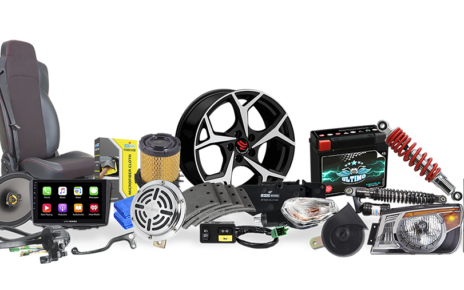
The automotive industry is facing an escalating crisis that threatens public safety, undermines consumer trust, and causes substantial losses to legitimate businesses. One of the most pressing challenges is the widespread infiltration of counterfeit parts into the market. According to the ASPA & CRISIL Report 2022, nearly 50% of the automotive parts business—covering critical components like suspension systems, braking items, drive transmission, and consumables—is vulnerable to counterfeiting. The report highlights that fake products make up an alarming 20–25% of this segment, with even authenticity features such as genuine part stickers being duplicated and sold at cheaper rates. This growing presence of counterfeit components not only endangers vehicles on the road but also disrupts the structured supply chain of genuine manufacturers and suppliers.
Alarming Market Penetration and Counterfeit Channels
What makes the counterfeit crisis even more dangerous is the level of market penetration and the growing normalization of fake parts among both sellers and consumers. A significant portion of vehicle owners are not just unaware victims—they are, in many cases, willing participants. As per the ASPA & CRISIL Report 2022, approximately 36% of customers knowingly purchase counterfeit automotive parts. Of these, 41% cite lower prices and the unavailability of genuine alternatives as key drivers behind their choice. The problem is further intensified by the highly fragmented and largely unregulated vehicle servicing ecosystem. With many consumers depending on informal or unorganized service centers, these workshops often opt for cheaper counterfeit components to cut costs and increase profit margins, thereby fuelling the illicit supply chain and further embedding it into everyday operations.
The counterfeit market operates through several sophisticated channels. Some products are complete fakes—visually similar to genuine parts but functionally deficient. Others infiltrate the supply chain through local manufacturing or overseas imports, often using fake packaging or repurposed original packaging. More complex cases involve production overruns of legitimate parts entering the grey market, where they are sold alongside counterfeit, recycled, or stolen goods. This creates a confusing and opaque marketplace, making it extremely difficult to distinguish between legitimate and illegal items.
Physical and Digital Authentication Technologies
To effectively address the growing issue of counterfeiting in the automotive sector, the industry should consider adopting a robust, multi-layered authentication framework that integrates both advanced physical and digital technologies. On the physical front, incorporating micro-optical security features that produce unique, non-replicable visual effects, and material-based authentication with proprietary chemical markers can significantly enhance part integrity. Tamper-evident packaging, laser-etched micro coding, and accessible tools like holograms and specialized printing techniques also serve as valuable deterrents. Hologram solutions, in particular, offer instant visual verification and can be customized with dynamic effects, making replication extremely difficult and enabling quick authentication at the point of sale.
Complementing these, digital authentication technologies offer further resilience. Blockchain can record each transaction in a component’s lifecycle, while cloud-connected systems enable real-time verification through smartphone apps. AI-powered tools can detect subtle deviations to flag counterfeit products, and digital twin technology can build comprehensive, traceable histories for each part. RFID tags, QR codes, and centralized digital records allow seamless tracking across the supply chain.
For these measures to be truly effective, an industry-wide, standardised approach is essential. This includes interoperable systems, training programs for service providers, public awareness campaigns, and certification frameworks to ensure supply chain partners comply with anti-counterfeiting protocols. Governments must also play a vital role by enforcing stricter regulations, mandating traceability measures, and adopting international verification standards such as ISO 22383, this international standard helps businesses establish protocols for detecting, preventing, and addressing counterfeiting, further enhancing the security of the products you buy. A collective, technology-driven effort will be key to safeguarding consumer safety and reinforcing trust in the automotive ecosystem.
Path Forward
The automotive industry has repeatedly demonstrated its ability to overcome challenges through innovation and collaboration. The counterfeit parts epidemic demands nothing less than a unified response combining advanced physical and digital authentication technologies with comprehensive training and education. The safety of millions depends on the authenticity of every vehicle component—a responsibility requiring coordinated action from every segment of the automotive industry.




